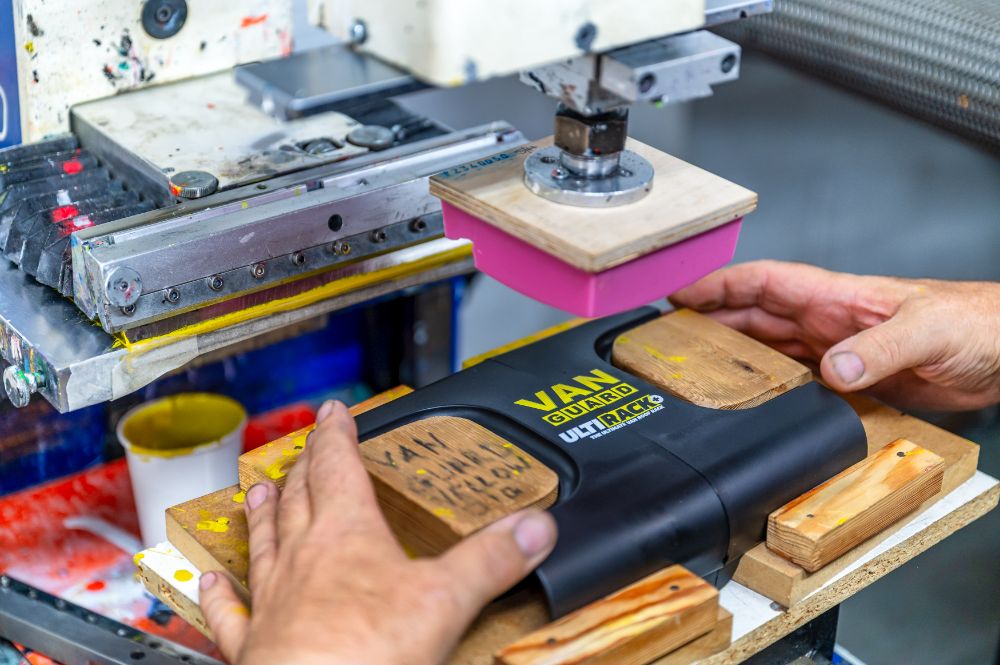Discover the Magic of Pad Printing: It’s Everywhere!
Ever noticed the crisp logos on your computer keyboard or the clear icons on your car key fob? Welcome to the fascinating world of pad printing.
A Sneak Peek into Pad Printing
Whenever you glance at your watch dial, admire the artwork on your phone case, or spot the logo on your charger, you’re witnessing the marvels of pad printing. This unique printing method, also known as tampography, transfers 2D images onto 3D objects, making it a ubiquitous and versatile technique.
Diving Deep: How Pad Printing Works
Imagine the stamp pads you toyed with as a kid. Pad printing is the grown-up version of that: a silicone pad takes ink from an etched base plate (cliché) and impresses it onto various objects. Thanks to advancements, today’s pad printing machines are multifunctional. However, the basic process remains:
- The desired design is etched onto the cliché.
- The etched area is filled with ink.
- Excess ink is wiped off.
- A flexible silicone pad picks up the inked design.
- The design is transferred onto the target material.
The adaptability of the silicone pad ensures that even the quirkiest surfaces get a sharp, precise image.
Why Choose Pad Printing?
Pad printing shines when dealing with unconventional printing surfaces:
- Ideal for a wide array of materials: metal, plastic, glass, and even candies.
- Cost-effective and user-friendly, making it a popular choice for businesses.
- Produces sharp images on small or uniquely shaped items.
- Perfect for branding merchandise and creating intricate designs.
- Offers multicolour printing capabilities.
Drawbacks to Consider
While pad printing is versatile, it’s not without limitations:
- It’s a meticulous process and can be slower than other methods.
- Best suited for smaller designs.
- Large blocks of colour might exhibit tonal inconsistencies in some machines.
The World of Pad Printing Possibilities
From micro-components, keyboard keys, and promotional keyrings to USBs, mugs, and jewellery, pad printing can personalize a myriad of products, making it a go-to method for businesses aiming to create branded merchandise.
Pad Printing vs. Screen Printing: Which One’s for You?
While pad printing is everywhere, screen printing is its well-known counterpart, primarily used for fabric designs. Screen printing pushes ink through a mesh stencil onto materials, offering vibrant results, especially for large-scale projects.
However, the decision between pad and screen printing isn’t about superiority. It’s about fit. Screen printing is excellent for extensive designs, but it struggles with irregular shapes and intricate details, a domain where pad printing excels. Furthermore, pad printing is generally more cost-effective and quicker to set up.
Final Thoughts
Whether you’re seeking advice on printing techniques or contemplating purchasing machinery, our experts are here to assist. Dive into the mesmerising world of pad printing and discover its endless potential!



